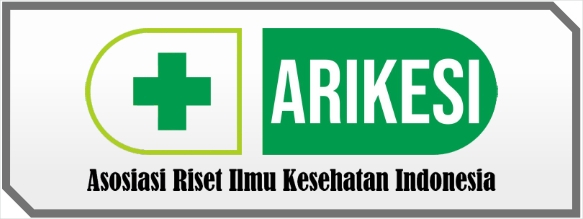Hubungan Personal Hygiene Dengan Kejadian Demam Tifoid Pada Pasien Rawat Inap Di RS TNI AU dr. Charles P.J Suoth Kota Manado
DOI:
https://doi.org/10.57213/tjghpsr.v2i1.182Keywords:
Typhoid Fever, Personal Hygiene, Salmonella TyphiAbstract
Typhoid fever is an infectious disease caused by the bacterium Salmonella typhi which is still common and frequently occurring. Indonesia is an endemic country for typhoid fever, with an estimated 800 cases per 100,000 population annually. The risk factors for typhoid fever include personal hygiene such as nail cleanliness, handwashing, dietary habits, and others. The aim of this study was to determine how personal hygiene affects the number of typhoid fever cases at RS TNI AU dr. Charles P.J Suoth in Manado city. This research used a descriptive analytic method with a cross-sectional approach. The instrument used in this study was a questionnaire. The data obtained were analyzed using the Chi-square test. The results of the study showed that the majority of subjects were aged >25 years (45.8%), with females being more susceptible (51.0%), unemployed individuals (19.8%), and with a middle level of education (39.6%). Bivariate analysis revealed a significant association between the habit of handwashing with soap after defecation and a p-value of 0.002. There was an association between the frequency of typhoid fever and the habit of washing raw food with soap before eating, history of direct contact with typhoid patients, and handwashing before meals.
References
Afifah, Nur Riezqiyah, & Pawenang, Eram Tunggul. (2019). Higea Jornal of Public Health. Higea Jornal of Public Health Research and Development, 3(2), 263–273.
Andayani, & Fibriana, Arulita. (2018). Kejadian Demam Tifoid Di Wilayah Kerja Puskesmas Karangmalang. HIGEIA Journal Of Public Health Research and DevelopmentJ, 2(1), 57–68.
Andriyani, Andriyani. (2019). Kajian Literatur pada Makanan dalam Perspektif Islam dan Kesehatan. Jurnal Kedokteran Dan Kesehatan, 15(2), 178–198.
Gunawan, Ni Made Yeni Suranti, Fathoroni. (2020). Variations of Models and Learning Platforms for Prospective Teachers During the COVID-19 Pandemic Period. 1(2), 75–94. Hubungan Antara Perilaku Hidup Bersih Dan Sehat Dengan Kejadian Demam Tifoid Di Wilayah Kerja Puskesmas Upai Kota Kotamobagu Tahun 2015. (2016). Pharmacon, 5(2), 2016. https://doi.org/10.35799/pha.5.2016.12215
Khalifah, Sayyidah. (2019). Rosdiana. 126(1), 1–7. Lingkungan, Sanitasi, & Rsud, Umum Daerah. (2018). Kandidat : Jurnal Riset dan Inovasi Pendidikan Hubungan Personal Hygiene. 2018–2019.
Maghfiroh, Aziz Etikawati, & Siwiendrayanti, Arum. (2016). Hubungan Cuci Tangan, Tempat Sampah, Kepemilikan SPAL, Sanitasi Makanan dengan Demam Tifoid. Jurnal Pena Medika, Vol. 6(No. 1), Hal. 34-45.
Mauliza, & Fitriany, Julia. (2018). Typhoid fever profiles at cut meutia hospital, north Aceh, Indonesia, in 2016-2017. Emerald Reach Proceedings Series, 1, 395–400. https://doi.org/10.1108/978-1-78756-793-1-00031
Nuruzzaman, Hilda, & Syahrul, Fariani. (2016). Analisis Risiko Kejadian Demam Tifoid Berdasarkan Kebersihan Diri dan Kebiasaan Jajan di Rumah. Jurnal Berkala Epidemiologi, 4(1), 74–86. https://doi.org/10.20473/jbe.v4i1.74-86
Seran, E., Palandeng, H., & Kallo, V. (2015). Hubungan Personal Hygiene Dengan Kejadian Demam Tifoid Di Wilayah Kerja Puskesmas Tumaratas. Jurnal Keperawatan UNSRAT, 3(2), 106549
Sjahrian, Tessa. (2015). Faktor-Faktor Yang Berhubungan Dengan Kejadian Demam Tifoid Pada Anak. Jurnal Medika Malahayati, 2(1), 1–7.













